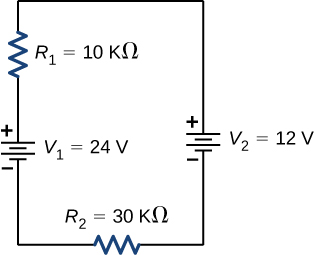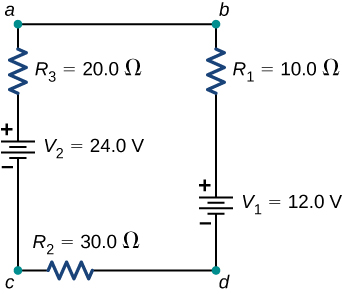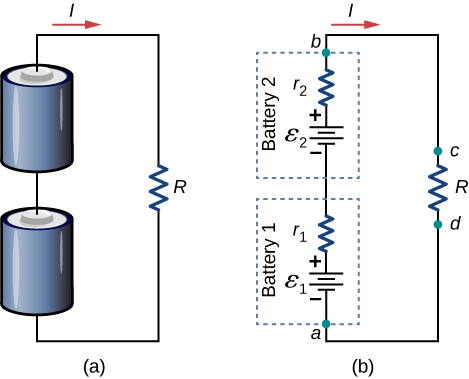| << Chapter < Page | Chapter >> Page > |
Check Your Understanding In considering the following schematic and the power supplied and consumed by a circuit, will a voltage source always provide power to the circuit, or can a voltage source consume power?

The circuit can be analyzed using Kirchhoff’s loop rule. The first voltage source supplies power: The second voltage source consumes power:

Simplify the equations by placing the unknowns on one side of the equations. Use the values given in the figure.
The power supplied equals the power dissipated by the resistors and consumed by the battery
Check Your Understanding When using Kirchhoff’s laws, you need to decide which loops to use and the direction of current flow through each loop. In analyzing the circuit in [link] , the direction of current flow was chosen to be clockwise, from point a to point b . How would the results change if the direction of the current was chosen to be counterclockwise, from point b to point a ?
The current calculated would be equal to instead of The sum of the power dissipated and the power consumed would still equal the power supplied.
Many devices require more than one battery. Multiple voltage sources, such as batteries, can be connected in series configurations, parallel configurations, or a combination of the two.
In series, the positive terminal of one battery is connected to the negative terminal of another battery. Any number of voltage sources, including batteries, can be connected in series. Two batteries connected in series are shown in [link] . Using Kirchhoff’s loop rule for the circuit in part (b) gives the result


Notification Switch
Would you like to follow the 'University physics volume 2' conversation and receive update notifications?